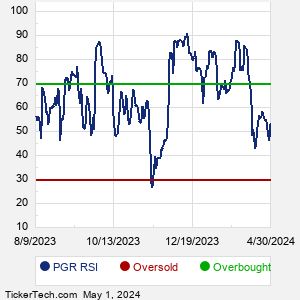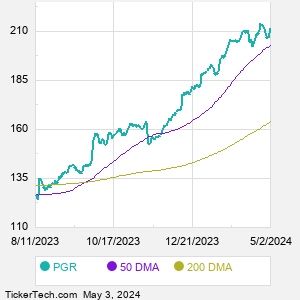Progressive is an insurance holding company. Co.'s insurance subsidiaries provide personal and commercial auto insurance, personal residential and commercial property insurance, workers' compensation insurance for the transportation industry, business-related general liability insurance, and other specialty property-casualty insurance and related services. Co.'s non-insurance subsidiaries generally support its insurance and investment operations. Co. provides Snapshot, an usage-based insurance (UBI) program, through both its hardware-based and mobile-app versions. Co.'s Smart Haul® is the other UBI program that uses driving data from a motor carrier's existing electronic logging device.
When researching a stock like Progressive, many investors are the most familiar with Fundamental Analysis — looking at a company's balance sheet, earnings, revenues, and what's happening in that company's underlying business. Investors who use Fundamental Analysis to identify good stocks to buy or sell can also benefit from PGR Technical Analysis to help find a good entry or exit point. Technical Analysis is blind to the fundamentals and looks only at the trading data for PGR stock — the real life supply and demand for the stock over time — and examines that data in different ways. One of these ways is called the Relative Strength Index, or RSI. This popular indicator, originally developed in the 1970's by J. Welles Wilder, looks at a 14-day moving average of a stock's gains on its up days, versus its losses on its down days. The resulting PGR RSI is a value that measures momentum, oscillating between "oversold" and "overbought" on a scale of zero to 100. A reading below 30 is viewed to be oversold, which a bullish investor could look to as a sign that the selling is in the process of exhausting itself, and look for entry point opportunities. A reading above 70 is viewed to be overbought, which could indicate that a rally in progress is starting to get crowded with buyers. If the rally has been a long one, that could be a sign that a pullback is overdue. |



